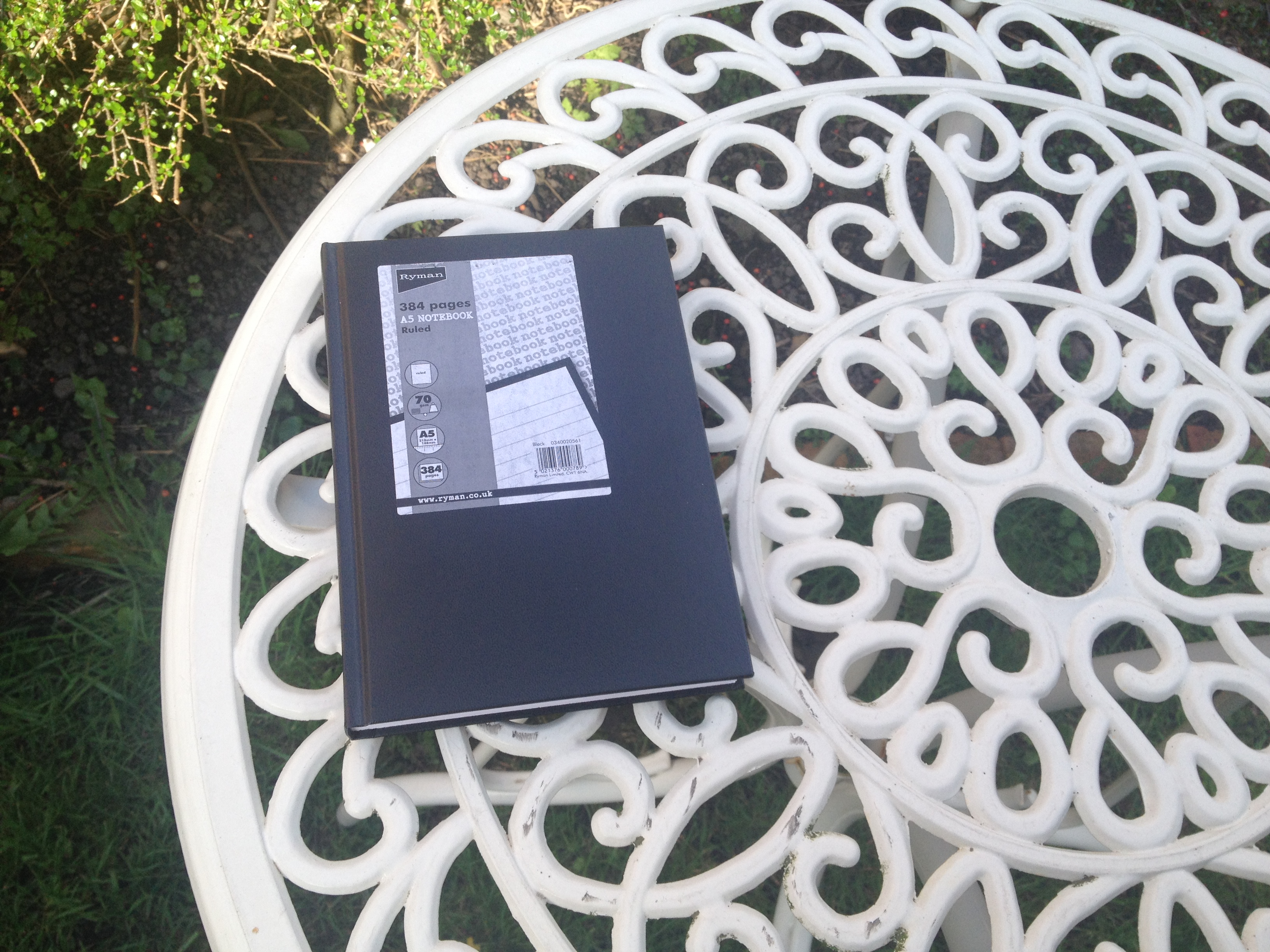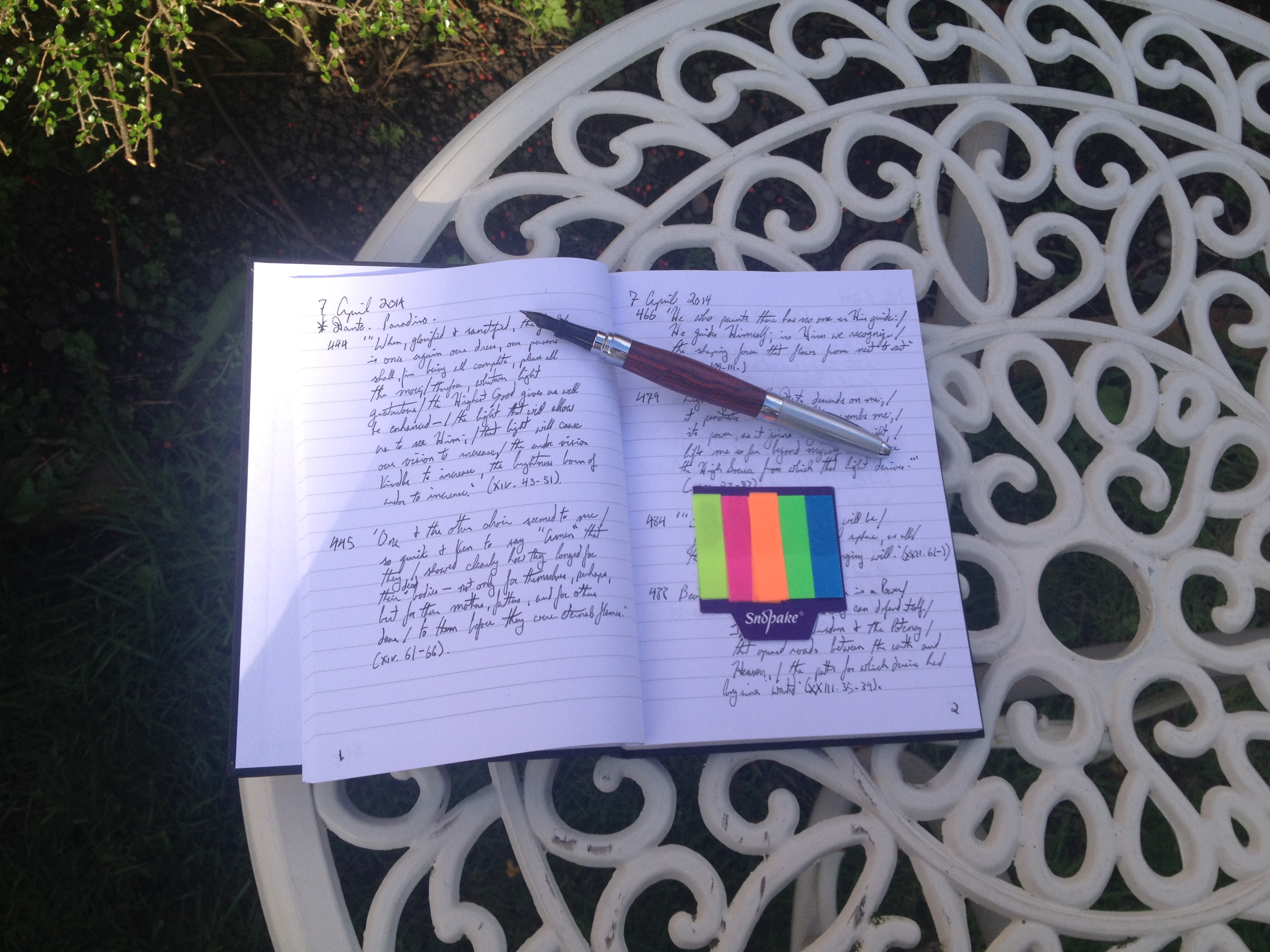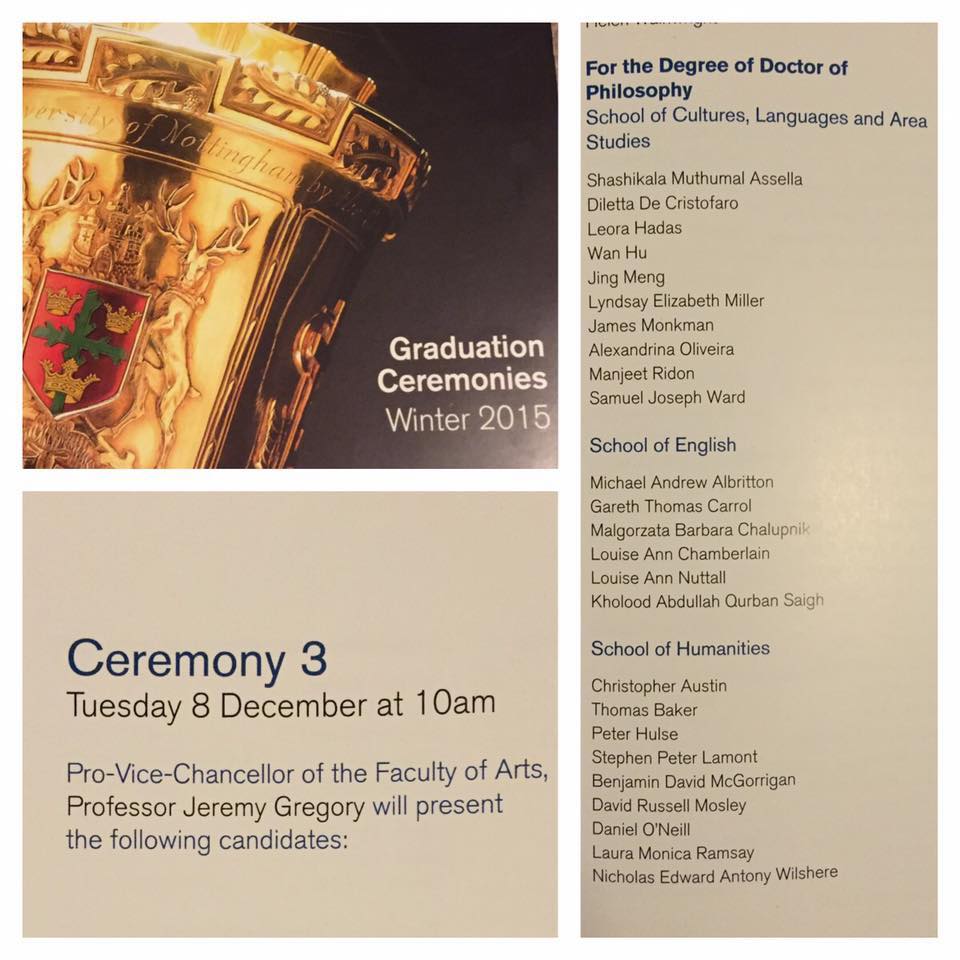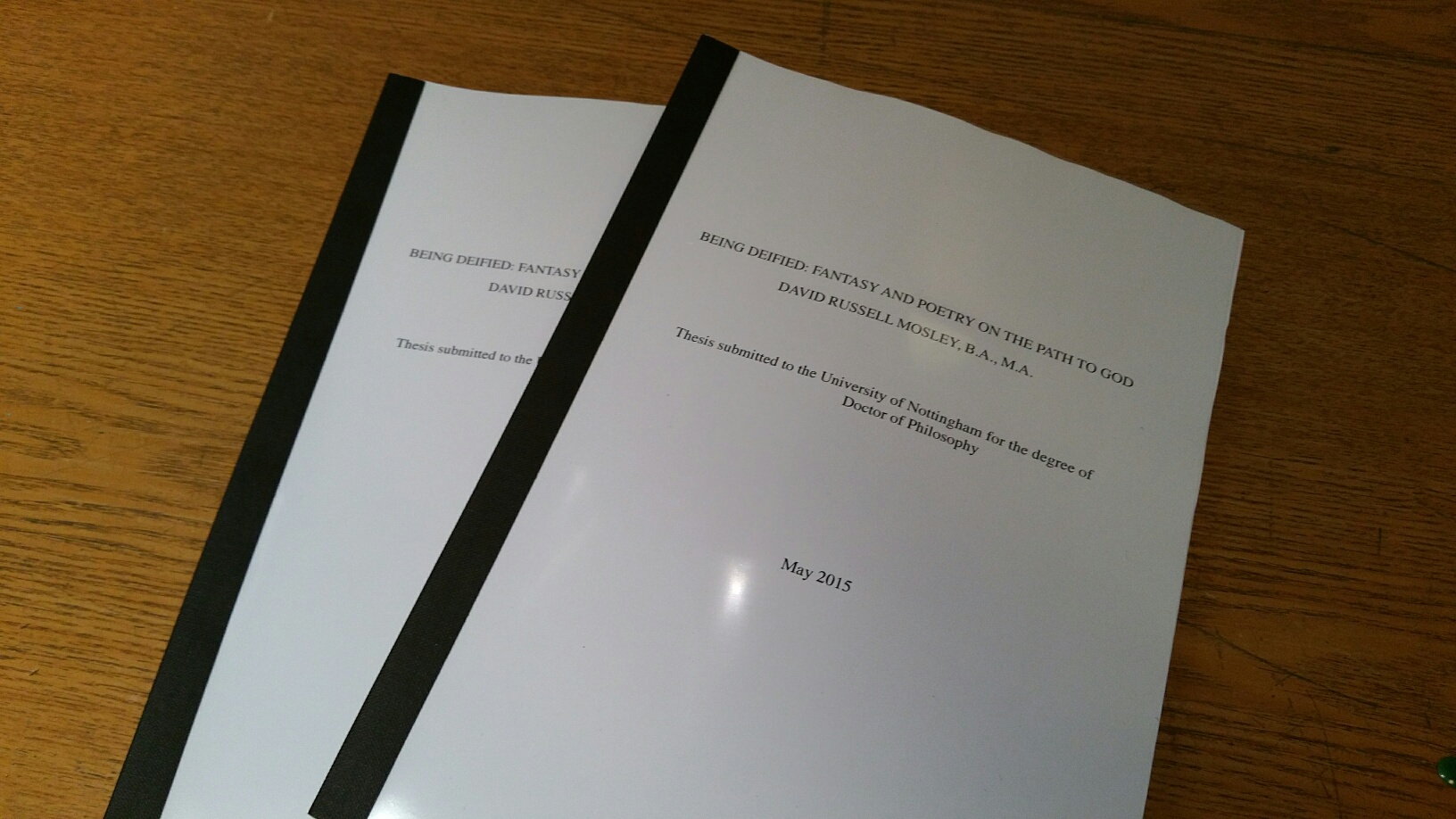David Russell Mosley
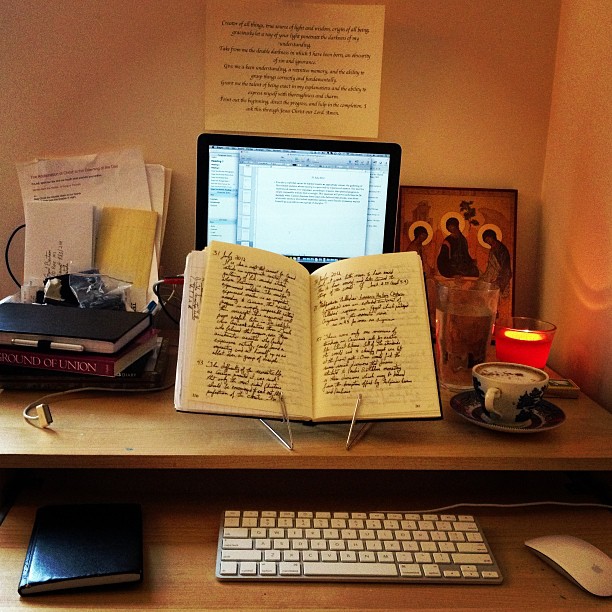
Lent
9 April 2014
On the Edge of Elfland
Beeston, Nottinghamshire
Dear Friends and Family,
Matt Moser, who blogs over at Christ & University, has asked that I write a letter on how I use my research journal. I thought I would oblige.
Truth be told, I stole this idea (of using a research journal) from a colleague here at Nottingham, though we use them slightly differently. Initially, my reasons for using a hand-written research journal were romantic as well as quasi-neo-luddite. Essentially, I worry sometimes about the effects the impermanence of the digital might have on us individually and corporately, but that is a letter for another day.
Here’s a rather narcissistic 16 minute long video I did on the subject. NB, I know longer use quite that many journals/notebooks:
Still, for nearly three years now, I’ve been taking primarily hand-written notes for my now nearly complete doctoral thesis, so at the very least this has worked for me. So here’s what I do:
The Notebook
Since living here in the UK and having a Ryman’s nearby, I have favoured the Ryman’s A5 Ruled Notebook with 384 pages. I dedicate the first fifteen pages or so for a preface. From there I number the pages 1-approx. 369 and start using it.
The Pen
Frankly, I tend to use whatever I have on hand, but always ink, never pencil. The reason for this is again one of permanence. Pencil is too quick to fade, or be erased, ink lasts. For the most part I favour a fountain pen my mother-in-law gave me for Christmas. Otherwise, I prefer fine-point pens, typically black.
The Use
With the pen and notebook in hand, the only thing left to do is write in it. I’ve a few different methods for note-taking, but what I have found works best is underlining in books I own and using tabs or post=its in one I don’t. As I’m reading, I’ll underline or mark what I want to write down. Then, once I’m done with the book (or as I’m reading it, depending on my mood), I sit down to evaluate what I’ve underlined/marked and write down the important stuff in the notebook. Sometimes, if what I want from the book is too long to write down in one sitting, I’ll just note what is on the page in a few words.
Here’s how a note-taking session tends to work for me. Wherever I’ve left off previously, I write down the date, so I know when I interacted with the text. Then, if I’m starting a new book, I write out a full bibliographic entry for the text with an asterisk to the lefthand side, noting that I’ve started a new entry. Starting with the first page on which I’ve underlined/marked something worth noting, I start writing out the quotations/notes. If it’s modern book, I write down the page number first followed by the quotation. If it’s an ancient text or the Bible, I write the abbreviation for the text followed by book and paragraph number or chapter and verse. Then I just keep writing until I’ve got down everything I want.
As I add new books, I try to make sure to write down the title and the page number on which I’ve started the book in my journal in the Table of Contents, though I’m not very good at keeping up with.
The key for all of this, however, is that I then type up the notes in a word document where the pages of the word document match up to the pages of the journal (for cross-referencing and spell-checking purposes). This might seem laborious, but it does three things I find really helpful. First, it solidifies the information in my head. Reading the text, then rereading it to write it out by hand only to reread it again in order to type it out, helps me keep a better handle on what I’ve got when it comes time to write. Second, when I finally get around to indexing my journals, having a digital copy will really come in handy. However, perhaps the most useful part of typing it out is it makes my notes much easier to use when I write. Rather than following the exact same referencing system as my journal, I use the digital copy to get a head start on footnotes. Rather than beginning each quotation or note with the page number, I end it with a properly formatted footnote. This way, when I go to put my notes in an outline or in the text I’m writing, I can simply copy and paste and hey presto! I have footnotes that only either need to be shortened or changed to ibid. (assuming I don’t have to change styles completely, but even then it’s typically not too hard).
Alongside eventually making indices, I also hope to put together a continuous digital copy. Rather than splitting pages based on the hardcopy, splitting them wherever the text would naturally split based on what’s written.
Anyway, this is how I do it. How do you take notes for your research (if you’re lucky or unlucky enough––depending on perception––to have to do research?
Sincerely yours,
David Russell Mosley

